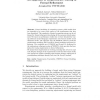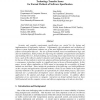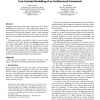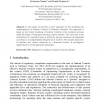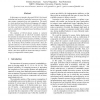VSTTE
2010
Springer
14 years 10 months ago
2010
Springer
Formal modeling of computing systems yields models that are intended to be correct with respect to the requirements that have been formalized. The complexity of typical computing s...
114
Voted
FM
2006
Springer
15 years 3 months ago
2006
Springer
Formal modeling is a crucial first step in the analysis of safety critical communication protocols such as IP Telephony. These protocols are notoriously resistant to formal modelin...
120
Voted
RE
1999
Springer
15 years 4 months ago
1999
Springer
This paper describes a feasibility study into the use of a formal requirements modeling method (SCR) to assist with Independent Verification and Validation of change requests for ...
CSEE
2000
Springer
15 years 4 months ago
2000
Springer
Accurate and complete requirements specifications are crucial for the design and implementation of high-quality software. Unfortunately, the articulation and verification of softw...
89
Voted
SIGSOFT
2000
ACM
15 years 4 months ago
2000
ACM
Designing architectural frameworks without the aid of formal modeling is error prone. But, unless supported by analysis, formal modeling is prone to its own class of errors, in wh...
101
Voted
IEEEARES
2006
IEEE
15 years 6 months ago
2006
IEEE
Formal modeling and verification of security protocols typically assumes that a protocol is executed in isolation, without other protocols sharing the network. We investigate the...
OTM
2007
Springer
15 years 6 months ago
2007
Springer
In this paper we present a novel approach for the modeling and implementation of Internal Controls in Business Processes. The approach is based on the formal modeling of Internal C...
ICECCS
2009
IEEE
15 years 7 months ago
2009
IEEE
In this paper, we introduce the model REMES for formal modeling and analysis of embedded resources such as storage, energy, communication, and computation. The model is a state-ma...
67
Voted
SIGSOFT
2007
ACM
16 years 1 months ago
2007
ACM
